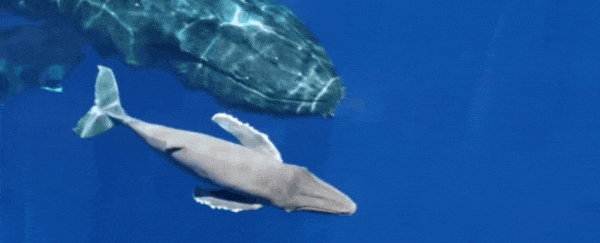A researcher studying whales and dolphins was treated to an extremely rare sight in January: a baby humpback whale swimming with its mum, less than 20 minutes after being born.
It's the closest Lars Bejder had been to a live birth in around 25 years - and lucky for us, he captured the extraordinary experience on camera.
Bejder, director of the Marine Mammal Research Program at the University of Hawai'i, has been studying marine mammals to understand how climate change, human activity, and food availability might affect the animals' behaviour.
To get closer to whales without disturbing them, he's been using an indispensable, airborne tool - a drone.
The researcher was using it to film whales off the coast of Maui when he was contacted by a local tour operator, who was alarmed by blood and splashing in the water. So Bejder deployed his drone in that direction.
Thankfully, the news was happy.

"This is quite extraordinary - within I would say 20 minutes of the humpback female giving birth to her calf," he said.
"We arrive up to the animals and there is still blood in the water and the calf very uncoordinated, but pretty much as close as we could get to a live birth."
Unlike fish, marine mammals such as dolphins and whales give birth to live young after a relatively long pregnancy (so do humans). Humpback whales gestate for 11 months, and the calves will feed on their mothers' milk for 5-7 months before being weaned.
The little ones are typically born tail-first so that they don't drown during the process. As soon as the calf emerges fully, the mum has to nudge it to the surface so it can take its first breaths. If all goes well, adult whales can live up to around 50 years of age.
The baby captured in this footage was so young, its dorsal fin and tail flukes still appeared to be quite soft. And, while it was a little on the clumsy side, it managed to stay upright; which meant that it's impossible to know whether it's male or female.
What we do know is that it's 100 percent adorable.
"I think everybody can appreciate these kinds of footages, and it brings us closer to these animals and gives us a really majestic view of these creatures," Bejder said. "I think it's pretty spectacular."
